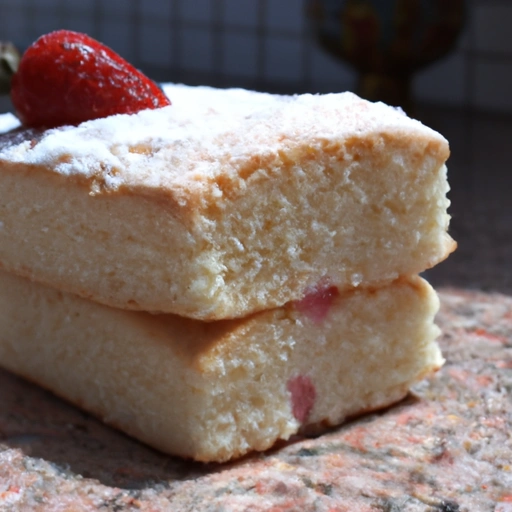Sponge Cake
Description

Sponge cake is a light and airy cake that is known for its fluffy texture and versatility in various desserts. Made with basic ingredients such as eggs, sugar, and flour, it gets its name from the sponge-like texture that comes from whipping the eggs to incorporate air. Measurements for making sponge cake can vary depending on the region, with cups and tablespoons being common in American recipes, while grams and milliliters are often used in European and Azjan recipes.
Common uses
Sponge cake serves as a base for many types of desserts, including layered cakes, roll cakes, and trifles. It can be soaked with syrups, layered with creams, or topped with fruits. In addition, sponge cake is often used to create lighter dessert options, as it can be less dense and contain less fat than other types of cake.
Nutritional value
Calories
A typical serving of sponge cake contains approximately 187 calories (or around 783 kilojoules).
Protein
Each serving can have about 2 to 3 grams of protein.
Fat
Fat content is usually around 2 to 5 grams per serving, depending on the recipe used.
Carbohydrates
Carbohydrates are present in the amount of 34 to 40 grams per serving.
Vitamins
It contains small amounts of B-vitamins from the eggs and fortified flour.
Minerals
Sponge cake provides trace minerals such as calcium, potassium, and iron.
Health benefits
While sponge cake is not typically considered a health food, it can be part of a balanced diet when consumed in moderation. It's a source of quick energy due to its high carbohydrate content and can also provide some protein and minerals.
Potential risks
Like many desserts, sponge cake is high in sugar and refined carbohydrates, which can contribute to weight gain if consumed in excess. It is also not suitable for those with gluten intolerance or celiac disease unless made with gluten-free flour.
Common recipes
Sponge cake is used in recipes like Victoria sponge, sheet cakes, jelly rolls, and éclairs.
Cooking methods
It is typically baked in an oven at 180 degrees Celsius (350 degrees Fahrenheit) until golden brown and a toothpick inserted into the center comes out clean.
Pairing with other ingredients
Sponge cake pairs well with fresh berries, whipped cream, chocolate ganache, and custard-based sauces.
Summary
Sponge cake is a classic dessert ingredient enjoyed worldwide for its light texture and adaptability. While it is a simple treat, it can be elevated with various fillings, toppings, and pairings to create delectable desserts fit for any occasion. Despite being high in sugar, it can be enjoyed in moderation as part of a varied diet.